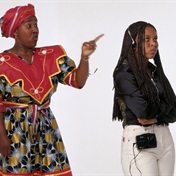
Some of us did not grow up in homes with pools.
And even if we know how to swim as adults, we do not always know what is best practice as parents when we can finally afford to buy those houses with the pool in the backyard.
On average, says the National Sea Rescue Institute (NSRI), there are approximately 1 484 drownings in South Africa annually. “A total of 29% (450) occur amongst children under 14 years,” says the South African volunteer organisation that helps save lives through rescue services and water-safety training.
Read more | Here’s where to go for survival swimming lessons
Kids under the age of 14 account for one in three drownings in SA.
Globally, drowning is the third leading cause of unintentional injury death, accounting for 7% of all injury-related deaths, says the World Health Organisation (WHO).
For this reason, the National Sea Rescue Institute (NSRI) is beefing up its water safety education and survival swimming programmes across South Africa.
Gauteng is a province of particular concern, says Executive Director of Drowning Prevention at the NSRI, Dr Jill Fortuin. “Since the inception of the water safety programme in 2006, the organisation has reached four million people through this project.
“We are delighted as the NSRI that organizations such as the South African Maritime Safety Authority (SAMSA) are collaborating with us to reach more people, specifically under 14s through this programme,” she adds.
“The geographic focus area for this project will be the Gauteng Province because of the province’s high number of fatal drownings.
“Johannesburg, Sebokeng, Germiston, and Pretoria are the four areas that have the highest incidence of drowning per annum.”
Read more | Here’s a guide to help you put together a menstruation kit for your tween or prepubescent daughter
“When having a pool at home there are several very small things that you could do to ensure the safety of those visiting your home and using the swimming pool,” Dr Fortuin tells Drum.
She shares the following top tips for parents and child-minders in homes with swimming pools
- LEARN SURVIVAL SWIMMING or Learn to Swim
NSRI provides free survival swimming lessons at various facilities or you can sign up with your local swim school. Please ensure that they are accredited).
- BARRIER
It is very important to ensure that swimming pools have a barrier fence with a gate that is a self-locking gate. Pool fencing should be a minimum of 1,2 metres. An SABS-approved safety cover can also be used as a barrier device.
- SUPERVISION
When using the pool, no children under the age of 10 should be left unsupervised. When supervising children, avoid being distracted (e.g. answering your mobile phone etc.).
To remain vigilant whilst supervising, refrain from taking substances that could diminish your focus and response time, such as alcohol.
- WHAT TO DO IN AN EMERGENCY
If you can’t swim use a towel, broom, or pool noodle to assist the person.
Ensure that the Emergency Number 112 is known to everyone and displayed clearly,
You should also learn Bystander CPR: 100 to 120 chest compressions in one minute followed by two rescue breaths.
Tilt their head back slightly and lift the chin.
If it’s a baby, place your mouth over their nose and mouth, forming a tight seal, and breathe out for one second.
If it’s an older child, hold their nose closed and release a breath in their mouth. You should see the child’s chest rise.
Repeat the process and begin chest compressions by placing the heel of one hand on the centre of the chest in line with the nipples. You can put your other hand on top of that hand to help push.
Rapidly press down on the chest by about 5cm and release the pressure. Make sure you’re not pressing down on the child’s ribs.
Do 30 chest compressions, allowing the chest to rise completely between pushes and breathe into their mouth between each set of 30 compressions.
Check to see if the child has started breathing.
For infants, use two fingers instead of your hands to deliver 30 quick compressions.



















